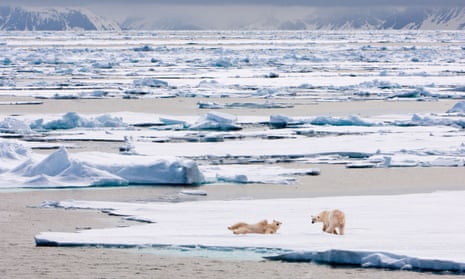This Week's Science Roundup: Rising Measles Cases, Whooping Cough Surge, Martian Carbon Cycle, and Colossal Squid Sighting

This weeks news roundup highlights significant developments in public health, ancient human survival strategies, intriguing astronomical discoveries, and a remarkable sighting of a colossal squid in its deep-sea habitat.
Greetings, listeners! Im Rachel Feltman, your host for Scientific Americans Science Quickly. As we kick off the week, lets dive into some of the most compelling stories from the world of science.
First on our agenda is an urgent public health issue. The Centers for Disease Control and Prevention (CDC) has confirmed a disturbing rise in measles cases across the United States. As of April 11, 2025, there have been 712 confirmed cases this year alone, compared to just 285 cases reported throughout 2024. Tragically, the CDC has documented two deaths linked to measles this year and is currently investigating a third case. This spike in cases has raised alarm bells, prompting the CDC's Advisory Committee on Immunization Practices to convene a meeting to address the crisis.
During this critical meeting last Tuesday, a leading scientist from the CDCs measles response team pointed out that the true number of measles cases is likely significantly underreported. Given the highly contagious nature of the virus, the situation could worsen if vaccination rates do not improve.
Furthermore, measles is not the only illness posing a threat to childrens health. Recent reports from ProPublica indicate that cases of whooping cough, also known as pertussis, have surged by over 1,500 percent nationwide compared to 2021. This resurgence has unfortunately resulted in an increase in fatalities associated with the disease.
Whooping cough is caused by the bacterium Bordetella pertussis, which spreads easily from person to person. Even individuals exhibiting mild symptoms can transmit the bacterium to others, putting vulnerable groups, particularly infants, at significant risk. While some infants may present with mild cold-like symptoms, others could face severe complications, including pneumonia and respiratory distress.
The most effective way to prevent the spread of whooping cough is through vaccination. The CDC recommends that children receive the DTaP vaccine at various stages: at two months, four months, six months, and again between 15 to 18 months, with a final dose administered from ages four to six. Additionally, a Tdap booster is advised for adolescents between 11 and 12 years old. Pregnant women are also encouraged to receive a Tdap booster ideally between 27 and 36 weeks of gestation to help protect their newborns.
Unfortunately, vaccination rates for various diseases, including measles, mumps, rubella, and pertussis, have been declining among kindergarten students, raising concerns among public health officials.
In another noteworthy public health development, a recent CDC study published last Tuesday indicated a rise in autism rates among children. The U.S. Department of Health and Human Services, led by Robert F. Kennedy Jr., released a statement asserting that this report reflects a persistent rise in [autism spectrum disorder] prevalence [and] an alarming escalation in case severity. However, this assertion contradicts the findings of the studys authors, who suggest that improved early detection, especially among historically underserved populations, may be contributing to the increasing rates.
Kristin Sohl, chair of the Autism Subcommittee of the American Academy of Pediatrics Council on Children with Disabilities, expressed to CNN that the findings are, in fact, encouraging.
Turning our focus to historical events, a study published in the journal Science Advances last Wednesday explored how ancient humans navigated the challenges posed by the Laschamp event, which occurred approximately 41,000 years ago. This geomagnetic excursion resulted in the shifting of Earths magnetic poles without a complete flip. During this period, the planets magnetic field weakened significantlydown to about 10 percent of its current strength. This reduction in magnetic shielding could have led to increased exposure to cosmic radiation, resulting in higher levels of ultraviolet light reaching the Earth's surface.
Interestingly, the studys authors noted that during this time, Homo sapiens began to utilize ochre, a naturally occurring pigment, more frequently. This use may have provided some level of sun protection. Additionally, researchers observed an increase in cave habitation in areas where solar radiation posed a greater risk.
Shifting our gaze to the cosmos, another groundbreaking study published last week in Science Advances revealed the discovery of a planet with an unusual orbit around a pair of rare failed stars, located approximately 120 light-years away. These brown dwarfs, which occupy a space between gas giants and small stars, have intrigued scientists due to their formation processes resembling those of true stars, despite lacking the hydrogen fusion that characterizes stellar activity.
This binary system is proving to be even more exceptional than previously imagined, as it features a planet orbiting one of the brown dwarfs at a perpendicular angle to the plane of their orbita phenomenon never before observed in a binary star system.
Back on our home planet, scientists have discovered new evidence suggesting that Mars once supported a carbon cycle similar to Earths. A study released last Thursday in the journal Science detailed how the Curiosity rover uncovered a mineral known as siderite while drilling in Gale Crater. Siderite, composed of iron and carbonate, indicates that carbon once circulated through Mars environment, supporting the theory that the planet might have had a thicker atmosphere capable of sustaining liquid water.
To conclude on a lighter note, researchers have made an exciting discovery: a young colossal squid, a species first identified a century ago, has been filmed in its natural habitat for the very first time. Using a remote-controlled vessel, scientists captured footage of this squid, measuring about a foot (30 centimeters) in length, at a depth of nearly 1,968 feet (600 meters). Adult colossal squids can reach impressive lengths of up to 23 feet (seven meters) and weigh as much as 1,100 pounds (500 kilograms). You can check out the captivating footage on our YouTube channel; links will be provided in our show notes.
That wraps up this weeks science news roundup. Well be back again on Wednesday with more updates.
Science Quickly is brought to you by me, Rachel Feltman, along with our dedicated team: Fonda Mwangi, Kelso Harper, Naeem Amarsy, and Jeff DelViscio. This episode has been edited by Alex Sugiura. Our fact-checking team includes Shayna Posses and Aaron Shattuck, and our theme music was composed by Dominic Smith. For more detailed and timely science news, consider subscribing to Scientific American.
From all of us at Scientific American, have a fantastic week!



























